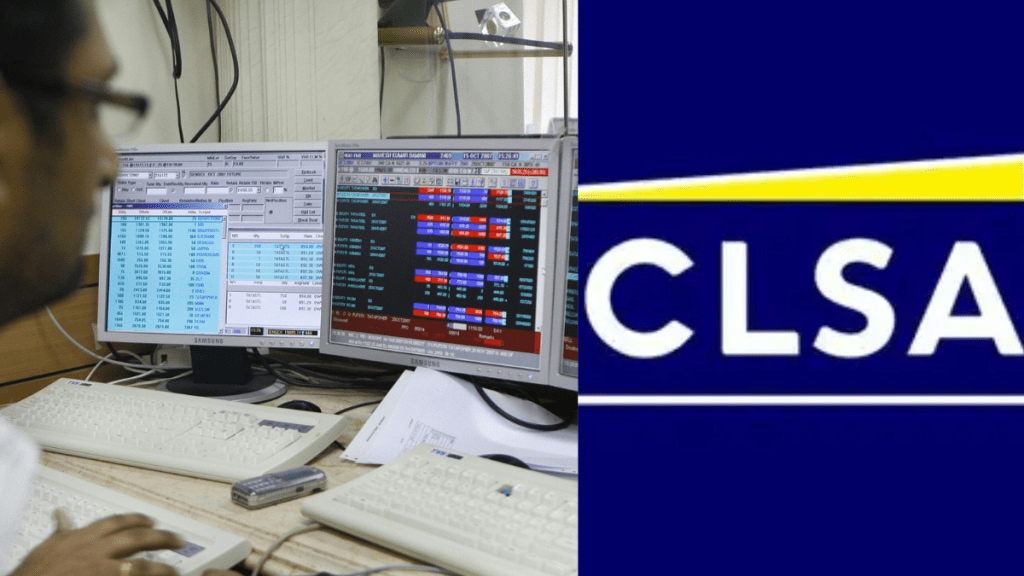The benchmark Indian stock market indices, Sensex and Nifty, have corrected nearly 10% from their recent highs over the past few weeks, but that appears to be good news to some. In a recent turn of events, Asian capital markets and investment group, CLSA, has reversed its India strategy. They have gone back from their tactical allocation shift from India to China and are again 20% Overweight on India – meaning they believe investments are likely to outperform their outlook. This is because they consider India as “arguably the principal scalable growth opportunity in emerging markets” after the recent correction.
If we analyse the market movement, large and midcap stock index MSCI India has corrected by almost 10% in dollar terms since CLSA sliced exposure in early October. Compared to the September 27 peak, MSCI India has corrected by 12%. This has also been a period when India has seen steady outflows by foreign institutional investors (FII). In November, FIIs have sold nearly Rs 31,000 crores in equities preceded by almost Rs 1 lakh crore worth of outflows in October. According to Alexander Redman, CLSA’s managing director and chief equity strategist, “investors we have met over the year have been waiting specifically for such a buying opportunity to address underexposure to what is arguably the principal scalable growth opportunity in EM.”
The question is what changed or what helped? Here is a look at 6 key factors listed out by CLSA:
1. Currency Stability
In Redman’s words, “India has lately become a relative poster child of EM FX stability”. He explained how “an uptick in bond net portfolio inflows post India’s inclusion into the JPMorgan GBI-EM fixed income benchmark, together with India’s rising global export market share (being relatively unexposed to the US) supports the external position.”
He however added that India does remain sensitive to energy prices as 86% of the country’s oil consumption is imported (49% of natural gas and 35% of its coal needs) and they “remain concerned about the potential for risk premium in the oil price or at worst, a substantive supply interruption from Iran-Israel tensions.” But a 10% discount applied to 40% of oil imports sourced from Russia is helping in “partially mitigating this risk.”
2. Earnings outlook robust
Earnings along with FII selling has been a key worry point for Indian investors. Redman pointed out that “Earnings momentum has softened yet the outlook remains robust.” They highlighted how “Given recent years’ rupee stability and the acceleration in local currency earnings, the trend progression in dollarised EPS for India has regained the 30-year trend line.”
According to CLSA, India is one of the few emerging markets where a relationship between corporate earnings growth and the changes in the pace of economic output holds true, attributable to the country’s more domestically oriented equity market.”
He explained that they find it encouraging that the forecast acceleration of India’s nominal GDP growth through 2025-2026 is sufficiently strong to validate the current consensus EPS growth estimates.
3. Room for upside for MSCI India
Over a 12-month time frame CLSA sees adequate upside potential. Their model implies the MSCI India Index could move up as much as 13% from current levels. “While the model indicates that Indian equities remain 13% overbought (although at end-September the peak deviation was as high as 21%), there is 13% US dollar upside potential over the next 12 months based on CLSA economic projections,” stated the CLSA report outlining their big reversal in strategy.
4. Strong domestic retail appetite
FII selling has been a concern no doubt but one cannot overlook that domestic retail appetite has been quite strong. In fact as per the most recent AMFI data shared, monthly inflows into mutual fund SIPs (systematic investment plans) breached the ky Rs 25,000 crore mark for the first time in October. According to CLSA this has compensated for foreign investor net selling since “Indian equities are 83% domestically owned, the highest such proportion across emerging markets. Rolling three-month cumulative inflows into domestic equity mutual funds have accelerated to 0.42% of market cap, just off a record high,” stated CLSA’s Redman.
5. CLSA says “Valuation, though expensive, is now a little more palatable”
After the recent correction, CLSA highlighted that “India’s cyclically adjusted PE multiple has somewhat retraced to 33.5x from a September peak of 37.9x. India’s asset based valuation has de-rated a little to a book multiple of 4.0x from the recent peak of 4.5x. The ratio of India’s actual price book to warranted has fallen back to 17% versus the 20-year average of 29%.”
In addition, CLSA stated that “India’s 23% price book premium versus overall EM can be justified by the market’s superior ROE (15.8%) and lower COE (10.3%) compared to EM (13.1% and 11.5%, respectively) together with India’s structurally superior growth.”
6. IPO issuance: Good news or bad news?
CLSA calculations indicate that given the flurry of primary market actions, “As a proportion of market cap, issuance has reached 1.5%, close to the same level at which it peaked in the last four cycles in Indian issuance which in turn coincided closely with peaks in secondary market momentum.”
According to them, a “chief risk for the Indian equity outlook is the acceleration in issuance which ultimately threatens to swamp the secondary market with supply. Cumulative 12- month rolling issuance (IPOs and secondary offerings) reached a record $66 billion in October.”
